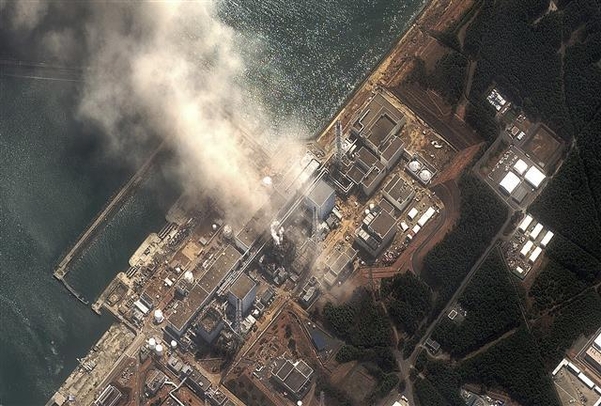Input 2021.03.08 18:00
“Development of nuclear reactor to block the source of major accidents worldwide”
Although Korea and Japan need to use nuclear power plants that do not emit greenhouse gases to respond to the climate crisis, it was argued that concerns about the safety of nuclear power plants, which emerged from the 2011 Fukushima nuclear power plant accident, are preventing discussions on restarting nuclear power plants. Nuclear power plant experts at home and abroad argued that as the nuclear power plant industry is concentrating on developing nuclear reactors that block the possibility of accidents by taking the Fukushima nuclear accident as an opportunity to overwhelm the phone, governments should also strive to establish a nuclear power plant policy that puts safety first.
Akira Yamaguchi, professor at the University of Tokyo, Japan and vice-chairman of the Japan Atomic Energy Society, was held by the Korean Atomic Energy Society on the 8th, ’10 years after the Fukushima accident, what is the current nuclear power?’ In a webinar (online seminar), he said that nuclear power plants are necessary for the transition to an eco-friendly society that does not emit carbon.

“Worldwide, nuclear power has produced 50% of carbon-free electricity over the past 50 years,” he said. “Japan supplied 73% of carbon-free electricity to nuclear power plants in 2010, a year before the Fukushima nuclear accident, but the proportion after the accident. This has dropped to 27%.” He emphasized that nuclear power plants must be operated to increase the proportion of eco-friendly electricity generation that does not emit greenhouse gases.

However, Professor Yamaguchi predicted that it will take time before public opinion over nuclear power plant safety improves. He said, “In Japan, despite the efforts of the nuclear power plant, only 50% of the people believe that nuclear power plants are needed, and only 40% of the people recognize that nuclear power plants are carbon-free energy sources. “We can see that the value of nuclear power has not been passed on to the public, but we will change our perception through a policy that prioritizes safety of nuclear power plants in the future.”

He said, “After the Three Mile nuclear power plant accident in 1979, there have been many changes, such as establishing nuclear power plant regulations, improving nuclear power plant operator training, and strengthening communication,” he said. “As the United States suffered pain after the Three Mile accident, Japan succeeded in resuming the nuclear power plant industry. I believe that I will overcome the crisis.”
The nuclear accident that occurred at the Fukushima nuclear power plant due to the 2011 Great East Japan Earthquake marks its 10th anniversary on the 11th. This accident served as an opportunity for Japan and Germany as well as Korea to introduce a nuclear power plant policy.
At that time, when the tsunami hit the Fukushima No. 1 nuclear power plant, the operation of the cooling systems for units 1 to 4 was stopped, and core melting (melt down) and hydrogen explosion occurred. As a result, a large amount of radioactive material spills into the atmosphere and ocean. This accident was at the highest level (7) of the 1986 Chernobyl nuclear accident in the former Soviet Union, based on the International Nuclear Accident Class (INES).
This accident is regarded as a major event that informed the necessity of risk management of nuclear power plants, but some experts argue that the risk of nuclear power plants has been exaggerated as a result of this. Park Moon-gyu, a professor at Sejong University’s Department of Quantum Nuclear Engineering, said in a presentation on the day, “While more than 40,000 people have died in traffic accidents since 2011, few people have died from nuclear power plants.”
In addition, since the characteristics of each power plant are different, the Fukushima nuclear power plant should not be used to evaluate the safety of nuclear power plants. He explained, “The Fukushima nuclear power plant has a small containment container, so there is a high possibility that pressure will rise rapidly, while the Korean-type nuclear power plant APR1400 has a large and thick barrier, so there is a difference in strength.”
Professor Park said, “Currently, the global nuclear power plant industry is focusing on the development of nuclear reactors that block serious accidents at the source.” ‘It can be,’ he added.
